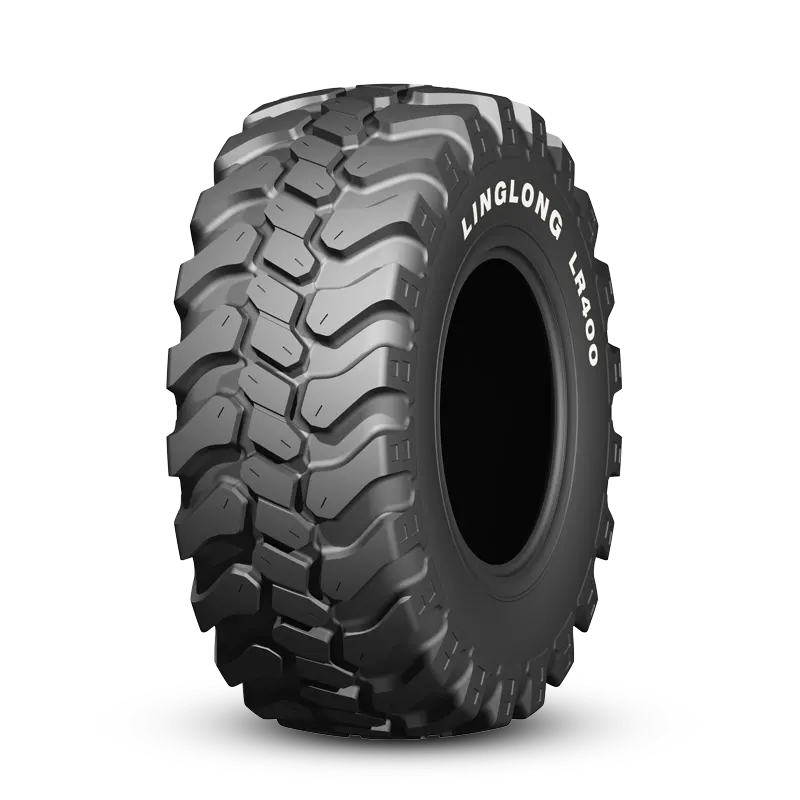Radial AGR Tires: Enhancing Agricultural Performance and Efficiency
2025-04-29
In the ever-evolving world of agriculture, the right equipment and technology can make a world of difference in the efficiency and productivity of a farm. One crucial aspect of modern agricultural machinery that often gets overlooked is the tire. When it comes to tractors, harvesters, and other agricultural vehicles, the tires play a key role in ensuring smooth operation and optimal performance in various conditions.

Among the different types of agricultural tires available, radial AGR tires are becoming increasingly popular due to their superior design and functionality. In this article, we’ll explore what radial AGR tires are, how they differ from other tire types, and why they are an essential choice for modern farmers.
What Are Radial AGR Tires?
Radial AGR tires are a specific type of agricultural tire that uses a radial ply construction. Unlike traditional bias-ply tires, which have layers of rubber that crisscross each other at an angle, radial tires have layers that run perpendicular to the tread. This design provides several performance advantages, particularly when it comes to handling, durability, and fuel efficiency.
AGR, in this context, refers to Agricultural tires, designed specifically to meet the demanding needs of farming equipment. These tires are engineered to handle the unique challenges of agricultural work, including heavy loads, wet and uneven terrain, and the need for both traction and flotation.
How Do Radial AGR Tires Work?
The main feature that sets radial AGR tires apart is the radial construction. Here’s a closer look at how it works:
1. Radial Ply Construction
In radial AGR tires, the cords that make up the tire’s structure are laid out radially (at 90 degrees to the direction of travel). This allows the tire to flex more evenly, improving traction and ride comfort.
2. Sidewall Strength
Radial tires are known for their stronger sidewalls. This strength is crucial when agricultural machinery needs to carry heavy loads while traversing rough or uneven terrains. The strong sidewalls prevent the tire from distorting or bulging under pressure, maintaining stability.
3. Lower Rolling Resistance
The design of radial tires allows them to generate less rolling resistance compared to bias-ply tires. This means less energy is wasted as the tire moves, resulting in fuel savings and better overall efficiency.
4. Better Traction and Comfort
Radial AGR tires provide a larger contact area with the ground, which translates into better traction. This feature is especially important when working in soft, muddy, or uneven soils. The tires are more flexible, absorbing bumps and uneven surfaces, leading to a smoother ride for both the equipment and the operator.
Why Choose Radial AGR Tires?
1. Improved Fuel Efficiency
One of the major advantages of radial AGR tires is their ability to improve fuel efficiency. Due to their design, they experience less rolling resistance, which means the engine doesn’t have to work as hard to move the vehicle. This results in lower fuel consumption, which can lead to significant cost savings over time—especially for large-scale operations where fuel is a major expense.
2. Extended Tire Life
Radial AGR tires tend to last longer than their bias-ply counterparts. The even wear and superior structural integrity of the tire help it withstand the stresses of long working hours on rough terrain. The tread wear is more uniform, which results in a longer lifespan and better overall value.
3. Better Load Distribution
The construction of radial AGR tires allows for a more even distribution of weight across the tire. This ensures that heavy machinery can operate efficiently without putting excess strain on any one part of the tire. This distribution of weight also helps to avoid soil compaction, which is a key concern in agricultural work. By reducing compaction, radial tires preserve the soil structure, allowing crops to grow more effectively.
4. Enhanced Stability and Handling
Radial AGR tires provide better stability and handling when driving on uneven, sloped, or soft terrain. The flexible sidewalls improve shock absorption, reducing the impact of bumps and uneven ground. This makes operations like plowing, harvesting, and planting safer and more comfortable for operators.
5. Superior Traction in Wet Conditions
Agricultural work often takes place in wet, muddy, or soggy conditions. Radial AGR tires excel in these situations due to their increased flexibility and improved traction. Their larger contact area with the ground gives them better grip, reducing the chances of getting stuck in the mud and improving the overall performance of farm equipment.
Applications of Radial AGR Tires
Radial AGR tires are used across a wide range of agricultural machinery, including:
- Tractors: Radial AGR tires provide tractors with the traction and durability needed to perform tasks like plowing, tilling, and hauling heavy loads.
- Harvesters: Whether it’s a combine harvester or a forage harvester, radial tires allow for smoother operation across fields while ensuring stability when carrying heavy loads.
- Sprayers and Spreaders: Agricultural sprayers and spreaders require tires that can handle soft and uneven terrain without compromising performance, making radial tires the ideal choice.
- Telehandlers and Loaders: For machines that move materials around the farm or construction site, radial tires provide the necessary support and stability to carry out heavy lifting tasks with ease.
Choosing the Right Radial AGR Tire for Your Farm
When selecting the perfect radial AGR tire for your equipment, it’s important to consider a few key factors:
1. Tire Size
Make sure the tire size matches the specifications required by your machinery. The tire’s width, height, and load capacity should be suitable for the type of work your equipment will be doing.
2. Terrain Type
Different tires perform better in various types of terrain. For example, if you’ll be working on soft, muddy fields, opt for tires with deep treads to maximize traction. If you’re on dry or hard-packed soil, tires with a smoother tread pattern may work better.
3. Load Capacity
Ensure the tire can handle the weight of the machinery and any loads it will carry. Overloading the tire can lead to faster wear and potentially dangerous situations, so always check the recommended load capacity for your equipment.
4. Brand and Quality
Choose a reputable brand that is known for producing high-quality agricultural tires. Investing in good quality tires might cost more upfront, but it will save you money in the long run due to their durability and efficiency.
Conclusion
Radial AGR tires are a game-changer for the agricultural industry, offering a host of benefits that improve efficiency, reduce fuel consumption, and increase productivity. Whether you are working with tractors, harvesters, or other agricultural machinery, radial tires can make a significant difference in the performance of your equipment.
With superior traction, durability, and fuel efficiency, radial AGR tires are the ideal choice for modern farming operations looking to optimize performance while minimizing their environmental impact. By choosing the right tires for your machinery, you’re ensuring that your farm operates smoothly, efficiently, and sustainably.


